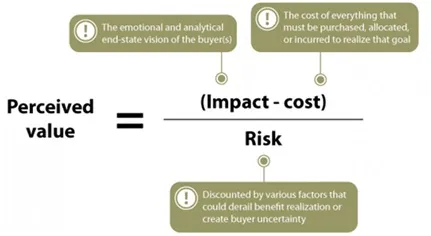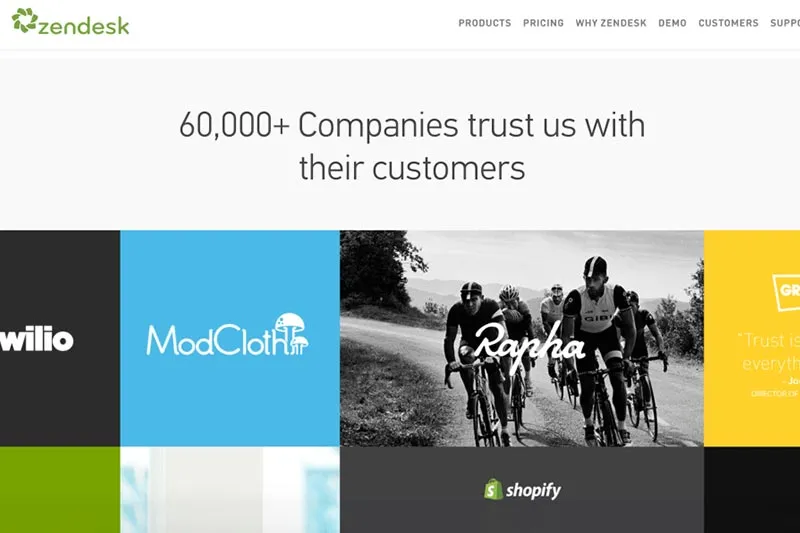How To Demonstrate Product Value

Every family has their traditions, from the annual barbecue to nightly sit down dinners. Remember yours? My family gathered for a “game night” every week. I was always more of a calm Chutes and Ladders gal- I tried my best to keep the mood light and happy with my selection. My brother, on the other hand, loved Monopoly.
Does this board game strike fear in your heart the same way it does mine? *cue tantrums in 3…2…1…*
Why does stealing a railroad card, or sending someone to jail incite an argument? How do these fake figurines and make-believe cards hold enough value to make us mad with greed?
These cards only hold so much value because we, the players, give it to them.
These pieces of plastic and paper have had their value quantified in dollars, and their perceived value enhanced by requiring someone to conquer the game with business savvy and wit.
My family continues to play this game, regardless of the disagreements that’ll unfold, because it’s nice to imagine a world you could potentially rule with strategy, money, and just enough luck.
The makers of Monopoly demonstrate their product’s value by quantifying and enhancing it to ensure engagement.

The same way Monopoly makers keep families playing their game, customer success managers, founders, product managers, and anyone connected to a SaaS product can foster engagement and ensure customer retention by demonstrating their product’s value.
In a previous article on customer retention, we discussed its importance and how it has transitioned into an even greater metric for customer success professionals and SaaS founders in the B2B market today.
We covered six strategies that would help you implement immediate measures for customer retention strategy reform. Of the six, the fourth recommendation (“demonstrate product value”) gained some interest and sparked curiosity from our readers.
Because of this, we decided to write this post to expand on the ideas discussed, and explain how they play a role in long-term goals and customer retention strategy reform.
Table of Contents
Value vs. Price
It’s important that we discuss what value actually is before evaluating a strategy for demonstrating it to your customers. Value and price are strikingly different concepts and we should firmly understand the difference before discussing anything else.
Stop! Do not pass Go. Do not collect $200.
As a customer success professional or SaaS founder, be sure you aren’t reminding your customers about what they paid for. Instead, remind them about the intention behind their purchase and the improved status quo.
What did the customer intend to achieve as a result of paying for your product?
“Price is what you pay, value is what you get.” – Warren Buffet
Value is easiest illustrated in a B2C transaction. For instance, when you buy a burrito bowl from a large fast-casual restaurant (up for Chipotle, anyone?), what is the value of this product? The price is clear. For $7, you receive a fast, filling, and tasty meal. The value, however, is satisfying your hunger efficiently. You can’t assign a value to the product based on the price of each single ingredient!

Source
As a customer success professional, you should constantly remind your customers about their intention and the goals they wanted to achieve when they paid for your product.
Prices can cast a hazy shadow over the benefit of your product. When charged with cutting costs and justifying every payment, people may forget what their intentions initially were, and why your product can help them achieve their goals.
That’s why the first way you can work to demonstrate the value of your product to customers is to emphasize it’s perceived value.
Advance to Go (Collect $200)!
Emphasize Perceived Value for Customer Retention
We often define perceived value as a subjective feeling connected to the return on investment. Basically, we gauge our level of satisfaction based on whether or not the product satisfies our needs and requirements.
This perceived feeling needs to be discounted on the basis of the price we paid.
A product can then trigger delight when the perceived benefits are a lot more than we expected based on the price we paid. It’s what we usually define as “good value for money.”
The aim of a great customer success team is reminding the user of that specific feeling of delight.
Your product can mean different things to different customers. As growth marketer, Alex Birkett, puts it in his post on how to increase perceived value
“there is no such thing as objective product value, at least when it comes to actually selling products.”
This lack of objectivity is particularly important in SaaS businesses. SaaS pricing models vary, from tiered user pricing to freemium models, and customers need to believe in your product enough to accept the price you’ve set for them.

Because of this, the sales team and the CSM possess the unique capability to influence how their customers feel, how their customers will perceive the product’s value, and can optimize the overall customer experience.
You can emphasize your product’s perceived value to customers with these three methods:
1. Humanize the Product
Customers will always have a certain level of uncertainty when exploring a new product. As the person behind the product, it’s your duty to put these worries to rest and foster a feeling of confidence and trust.
Show customers the people behind the product, who are diligently working to service calls, update the product, and share the company’s message.
To ensure customer retention and enhance perceived value, expose the people behind your product!
This can be done by connecting real employee faces to your company’s website. Start an employee testimonial page and ask a few questions.
What do you love about this company? What are your passions outside of work?
If you highlight someone new every other week, you’ll have a personable collection of faces that the customer can identify with.

This personal identification is important, because customers want to see themselves in the product.
Connecting your intangible product with something human will add a level of realness that can reduce perceived risk.
In a way, the more digital our world becomes the more we need to feel a real connections with human beings.
Nothing wrong with romanticizing your product a bit! Play around and construct an image that’ll provide a perfect product match for your customer. You’ll increase customer retention when the customer seamlessly merges and identifies with your product.
Your direct connection with your customers is the perfect chance to discuss their aspirations, find out how they imagine their work would improve thanks to your product, and create a detailed roadmap to get there.
Your product should solve the problem your customer has identified in the initial sales discussions. And when this initial intention is realized, your product should express success with a face! Customers talk to CSMs all day anyways, now let’s introduce them.
Your product may reside in the cloud, but customers’ heads aren’t. Make your product tangible with an added human touch.
2. Provide Social Proof
Customers need to feel comfortable in their decision for your product and will gather enough social proof to justify the payment or renewal. One of the best ways to provide social proof is by using your social media outlets effectively and making sure you’re involved in it!
Start an Instagram account for your SaaS business. Take photos of company lunches, engineers working on code, founders giving speeches at events… anything, really! Your customers are more likely to stick around if they can see the heartbeat behind the product.
Social media may be perceived as a crowded space in the tech industry, but it’s an extremely direct form of communication with the customer.
A newsletters tells customer that product updates are coming. Photos of engineers actually working on the product shows updates and new releases are coming.

Start a Twitter account and share product updates, noteworthy news, and interesting articles to an audience curious about SaaS, technology, and cloud integrations. This is not only a method for customer retention, but a way to increase your brand’s worth and authority.
If you have an interactive, responsive, and large audience, current customers will be reassured in your product’s position in the market. Would you prefer to follow the advice of PhD holding physician, or a mystic claiming medicinal properties?
Another way to bolster your authority for customer retention is to provide content on a company blog.
3. Be Involved in Your Company Blog
With a company blog, you can position your product, start a dialogue with your customers, and prove that you’re a thought leader in your space.
Content writers can create content your customers will be interested in actually reading. This enhances the perceived value of your product, as customers will come to your site for additional resources. These additional resources are now tied to your product and enhance it’s value.
As a customer success manager, though, you need to be involved in the process. You represent your customers in the company and being part of creative process will allow you to voice and address your customer’s needs and concerns.
Your input can become extremely valuable when it comes to choosing the right topics which are relevant to your clients and add value throughout the customer journey.
Additionally, being involved in your company blog means showing your competence and authority together with your personality. And this will allow to bond with your customers at a whole other level!

Use your company blog to discuss the best use cases for your product, answer common questions, and provide a forum for related topics.
This is also a place where you can collect additional proof to demonstrate product value.
Post successful case studies, product demos, white papers, and explainer videos to your blog.
Show your customers how your product actually works and present actual results. These resources will provide a researched, credible reason to customer that’ll work to combat churn and increase retention.
Quantify Product Value for Customer Success
Quantifying your product’s value is the most obvious way to demonstrate an actual return on investment to your customers.
By defining the time and resources you’ve invested on your end and requiring customers to play an active role, you can increase the product’s value. Customers will come to view your company as trusted business partner, making it harder for customers to walk away and churn.
Agree on quantifiable KPIs, set specific milestones, check in regularly to make sure you’re on track…customers have very different expectations. Make sure you’re on the same page!
Quantifying your product’s value to increase customer retention can be done the following ways:
1. Track and Record All Communications
Customer Success Managers should track every call, inquiry, ticket, and encounter with their clients. This way, you can target opportunities to provide and demonstrate value.
Pay attention to not only the recorded conversations, but the absence of any. If you’re actively recording every encounter and see a client has gone silent, it’s your chance to step in and curb a potential churn.

You can also use this information to see what kind of communication clients are expressing. Are customers asking for help all the time? Are CSMs having to reach out an abnormal amount? Provide clients with the proper tools and demonstrate product value in a tailored, individual way.
You can also use these conversations to document the actual value of your assistance. Something you intervened in and supported may have saved a client a lot of money.
Maybe a customer requested a particular addition to a product, which you then shared and pushed to the product team. After the next product release includes this requested feature, remind customers you facilitated this improvement for them.
This is now a quantified value for your customer success efforts, which you can use as leverage in the future to demonstrate product value.
2. Provide Additional Resources
As CSM, you can provide your clients with personal training sessions to educate them on your product. Maybe they need guidance in properly implementing the product. Maybe they aren’t utilizing the product to their highest benefit?
Record and keep track of every training you conduct and note the value your customer receives from each session.
You can also work with your product team and designers to develop an academy for your customers. This academy will supply customers with interactive videos, tutorials, and additional support.

You should also aim to educate your customers every time you communicate with them. Study up on your customer’s industry and provide them with insight into the newest trends or best practices in their field connected to the specific problems your product solves.
By providing your customers with this additional research, it’ll show your clients you care about their business and success. It’ll facilitate the way for conversations that would not normally be initiated, and you’ll foster stronger, more trusted business relationships.
Make sure you record what this research would translate to in actual dollars, and you can quantify your CS efforts for product value.
Final Thoughts
Properly demonstrating product value to clients can increase customer retention rates for you company, and create stronger relationships backed by hard numbers and trust.
Customer Success Professionals can implement and work on customer retention strategies to demonstrate product value in many ways:
- Emphasize Perceived Value
- Humanize the Product
- Provide Social Proof
- Be Involved in Your Company Blog
- Quantify Product Value
- Track and Record All Communication
- Provide Additional Resources
By focusing on these two strategies, customers will feel taken care of and reassured in your product. These measures will stunt any catalyst to churn and boost your customer retention.
Start optimizing all these tactics and there will never be a need to use a “Get Out of Jail, Free” on customers again!
Interested in knowing more about customer retention? Watch the replay of our webinar in which we showed how it is possible to plant the retention seed while onboarding new users!


